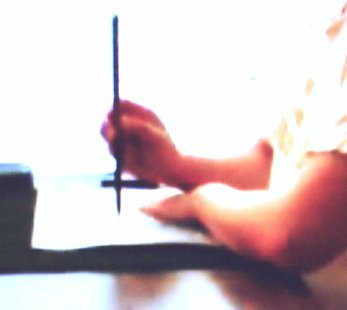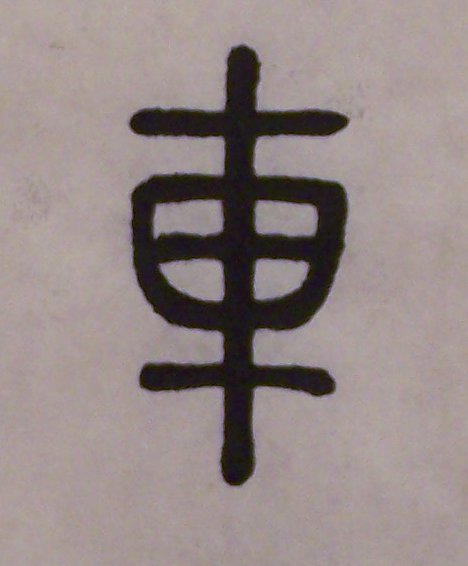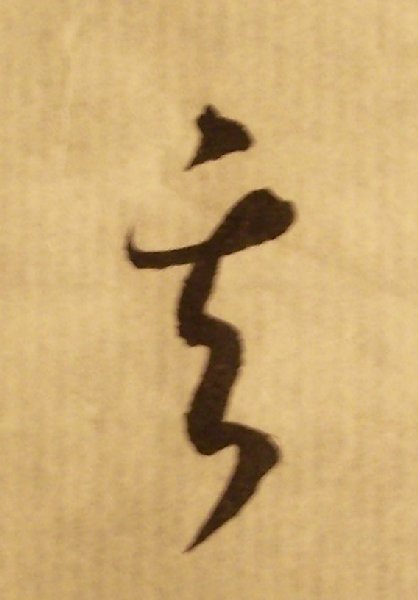
Basic Chinese Calligraphy Brush Theories
The Center Tip Theory ( 中鋒 Zong Fong Principle, Pinyin: zhōng fēng) refers to keeping the brush tip always in the middle of the stroke and keeping the brush handle perpendicular to the desk during writing. In this way the strokes will be full of strength and vigor. Ancient Chinese calligraphers have constantly emphasized this brush operating rule because it’s the core of all Chinese calligraphy theories and principles. Unlike Western calligraphy or pen writing, Chinese calligraphy brushes have soft hairs and require the practitioner to hold a brush vertical to the paper. If we ever need to bend the brush a little bit, it should be less than ten degrees or minimal.

The Center Tip Principle requires the writer to keep the brush perpendicular to the paper at all times.
However, not all Chinese calligraphy styles obey the Center Tip Theory absolutely without
using "側鋒
Tse
Fong"
(Pinyin: cè fēng)
or other techniques and combinations.
側鋒
refers
to bending the brush tip and handle sideways to create some effects; 側鋒
is
used very frequently in Chinese Brush Painting and may be combined with 中鋒
in
practicing Chinese calligraphy. However, only with mastering the Center Tip Principle can a
Chinese calligrapher achieve a high level. If one can practice with
中鋒
easily,
one can do
側鋒
even
more easily, but usually not vise versa. A balanced blend of "Zong Fong", "Tse Fong", and other techniques will create a beautiful and lively style. A work consisting only the "Zong Fong" technique will look powerful, masculine, and solemn. Yet a work without enough "Zong Fong" strokes will be weak, faint, and detachable.

Purely Zong Fong technique makes the character look solemn.

Zong Fong blended with Tse Fong makes the character expressive and lively.